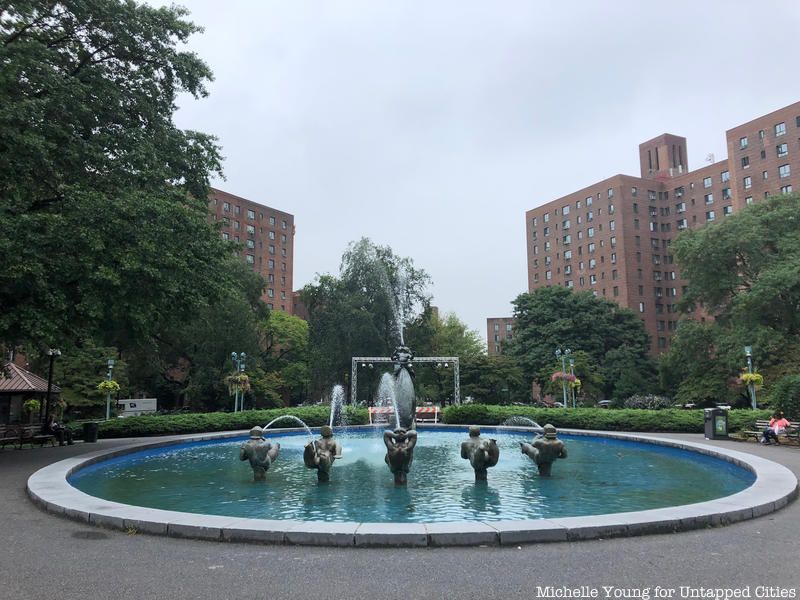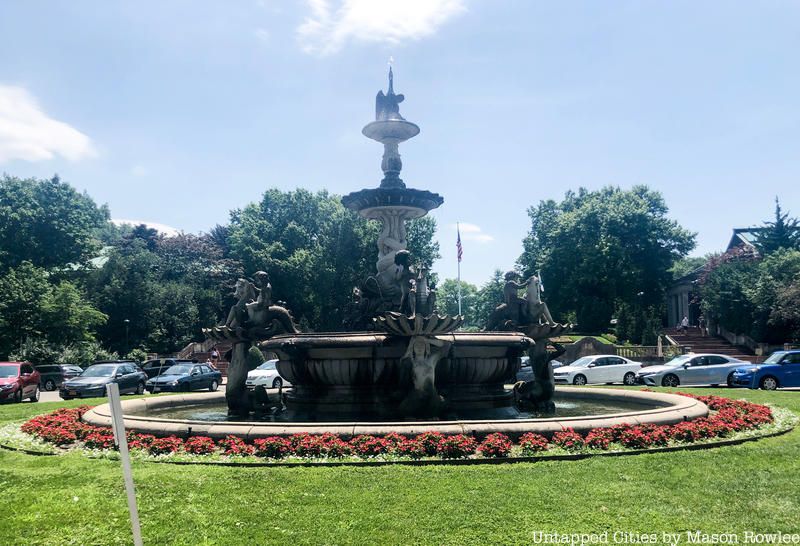Last Chance to Catch NYC's Holiday Notalgia Train
We met the voices of the NYC subway on our nostalgia ride this weekend!


If you know the history of the Bronx, its proclivity towards monumental urban planning and Beaux-Arts architecture has its roots in the City Beautiful movement. Overshadowed by blight and urban decay for much of the latter 20th century, the Bronx has a witnessed a resurgence of interest in is architectural heritage over the past decade. The Grand Concourse was designated a historic district by the Landmarks Preservation Commission in 2011 following an $18 million restoration that took place in 2008. In the City Beautiful movement, sculpture accompanied architecture side-by-side as an allegorical means to convey civic virtue.
Here we have rounded up five notable sculptures in the Bronx. Some are from the City Beautiful era, others that took a cue from its legacy.
The New York Botanical Garden ‘s original 1897 plans called for a fountain to be constructed in front of the Museum Building. The Botanical Garden held a design competition for the fountain but was unsatisfied with any of the submissions. In 1903, a new competition was held (and judged by the sculptors including Daniel Chester French and John Quincy Adams Ward) which Carl (Charles) E. Tefft won. The sculptor entitled his work “the Fountain of Life, typifying the great life principle of ‘Struggle for Existence’ and ‘Survival of the Fittest.'”

Parkchester (a portmanteau of the two neighboring neighborhoods Park Versailles and Westchester Heights) was created by the Metropolitan Life Insurance Company in the early 1940’s as a self-contained middle class Community. It contained a movie theater, stores, schools, and an beautiful public art scheme. In the center of the community is the Parkchester fountain which consists of delightful spouting Moderne figures.

Located in Joyce Kilmer Park, the Heine Fountain was inspired by Heine’s poem “Die Lorelei,” which is German for siren or mermaid. It tells the story of sailors who, distracted by the Lorelei’s singing, crash their vessels upon the rocks. The fountain was designed by Ernst Herter in 1888 for Heine’s hometown of Dusseldorf. The citizens refused the fountain because of their “dislike of the Jews.” The Heine Fountain ended up in the Bronx where it remains today. To read more about the Fountain check out our previous article The Sirens of Joyce Kilmer Park.

In 1870, Sebastiano Mondolfo offered the City of Como 20,000 lira to purchase a monumental fountain from the Palazzo Litta at Lainate, to beautify the newly designed Piazza Cavour. The City rejected his offer to relocated the fountain. So instead, Mondolfo hired a local sculptor who designed a new three tiered fountain for the Piazza. Immediately, opposition to the fountain grew. People criticized everything from its design to its tax on the water pressure. It was dismantled and placed in salvage. In 1902, William Rockefeller purchased the fountain and within a year, it was installed it the Bronx Zoo, in a setting designed by Heins and La Farge. The fountain was designated a landmark by the New York City Landmarks Preservation Commission in 1968 (within three years of the Commission being created).

The Macombs Dam Fountain was installed in its current location in Macombs Dam Park in 1936, across from Yankee Stadium. It was originally located at Jerome Avenue and 162nd Street, but was moved to accommodate a new approach for the Macombs Dam Bridge. Decades of ware and vandalism had caused it to stop working and lose it prominent lion’s head spout, but it was repaired and restored in 2006 to 2007 .
Subscribe to our newsletter